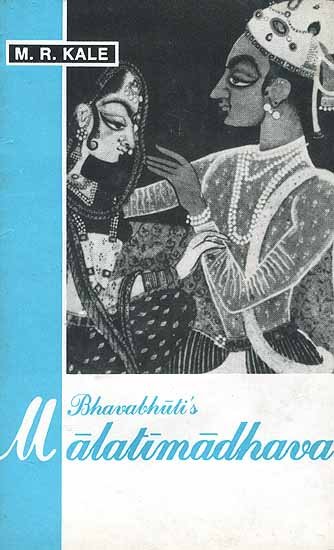Malatimadhava (study)
by Jintu Moni Dutta | 2017 | 52,468 words | ISBN-10: 8120813057 | ISBN-13: 9788120813052
This page relates ‘Definition of Guna (quality—principal element)’ from the English study on the Malatimadhava of Bhavabhuti:—A Prakarana type of Drama in ten acts revolving around the love-story of Malati (from Padmāvatī) and Madhava (from Vidarbha). This study discusses the history of its author and the literary, social, religious, historical and cultural aspects of the Malatimadhava.
Part 4.1-2 - Definition of Guṇa (quality—principal element)
Guṇa or quality is the principal element of poetry as well as drama. Guṇas are termed as poetic excellences. The poetic excellences are those charming features that embellish a composition and enhance its value as an object of appreciation. They are, as a matter of fact the decorative elements and facilitate to have the relish of the prevailing sentiment.
These excellences are defined by Viśvanātha as the qualities promoting the sentiment which has gained prominence in a piece of composition.[1]
Mammaṭabhaṭṭa opines that the properties that belong to the passion i.e. rasa, the principal factor, conducive to its maturity and having an unceasing existence are called guṇas i.e. qualities, in the same manner as bravery and such qualities belong to the soul.[2]
Types of Guṇa:
Before Viśvanātha Kavirāja it has been the tradition already established by the predecessors that there were three guṇas viz.,
With regard to the number of guṇas Bharata and Daṇḍin recognize ten guṇas.[3] While on the other hand Bhāmaha reduces their number to three and Vāmana virtually increases their number to twenty. [4] The Agnipurāṇa enumerates eighteen guṇas, six each of word and sense and six referring to both of them.[5] Kuntaka also gives the same numbers of guṇas, but on an entirely different basis.
On the basis of the natural disposition of a poet (kavisvabhāva), he considers literary diction to be sukumāra (delicate), vicitra (ornate), and madhyama (middle) each having six characteristics technically called guṇas.[6]
It has been seen that the later rhetoricians recognized only three guṇas viz.,
- Mādhurya,
- Ojaḥ [Ojas] and
- Prasāda.
Viśvanātha
Kavirāja also recognizes three types of guṇa.[7] Since, the guṇas are generally regarded as the attributes of word and sense, they are also treated on the basis of the peculiar arrangement of syllables as also that of words.[8] Hence, Mādhurya, Ojaḥ and Prasāda are recognized by all rhetoricians.
Footnotes and references:
[1]:
rasasyāṅgitvamāptasya dharmāḥ śoryādayo yathā guṇāḥ /
Sāhityadarpaṇa, VIII.1
[2]:
ye rasasyāṅgino dharmāḥ śoryādayaḥ ivātmanaḥ /
utkarṣahetavaste syuracalasthitayo guṇāḥ //
Kāvyaprakāśa,VIII.66
[3]:
[4]:
Kāvyālaṃkārasūtravṛtti, III.I.1-10, III.2.1-15
[5]:
Agnipurāṇa,346. 4-25
[6]:
Vokroktijīvita,I.30-50
[7]:
Sāhityadarpaṇa,VIII.1
[8]:
Kāvyaprakāśa,VIII.73
